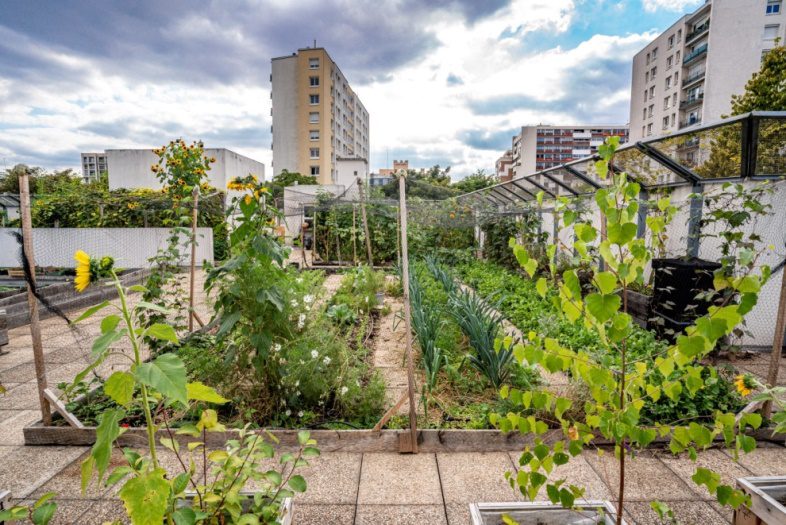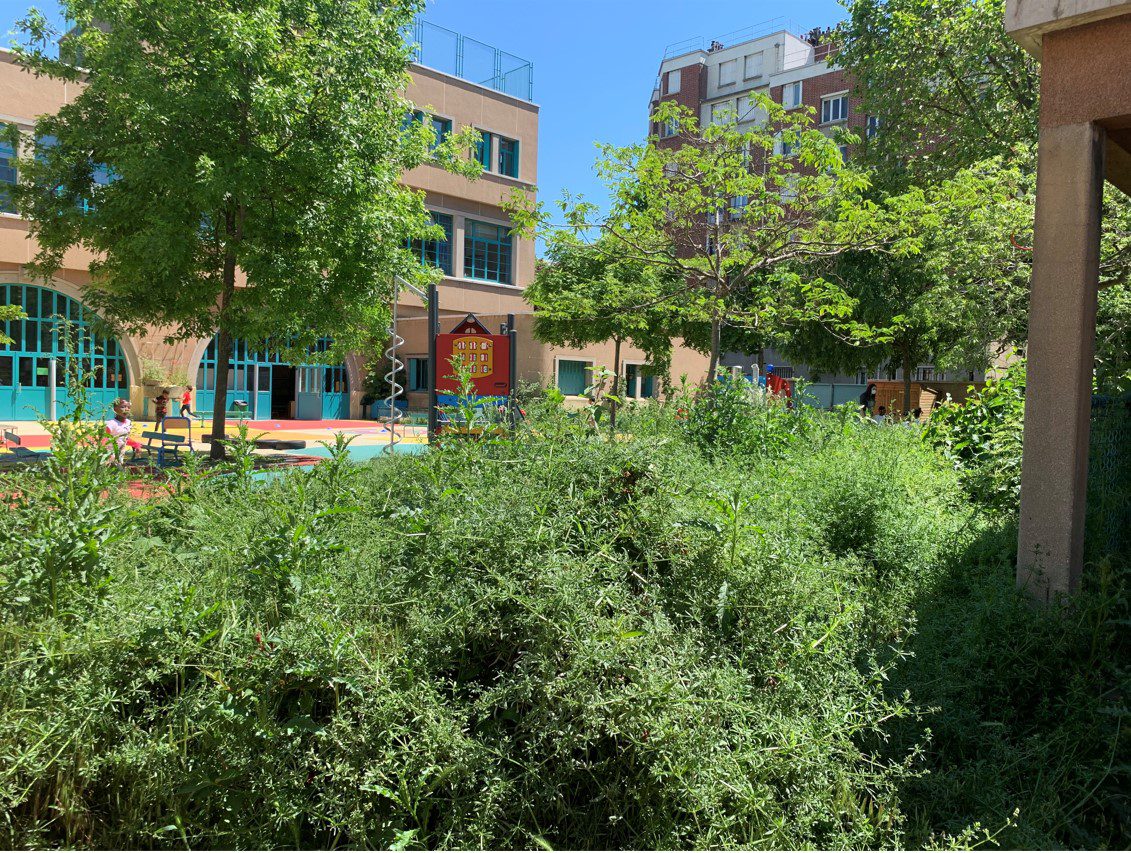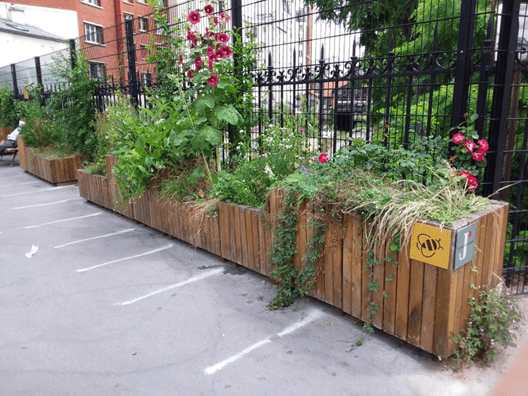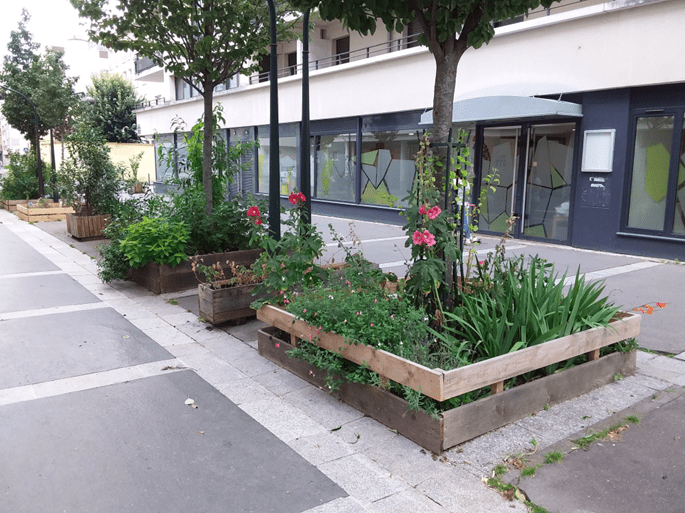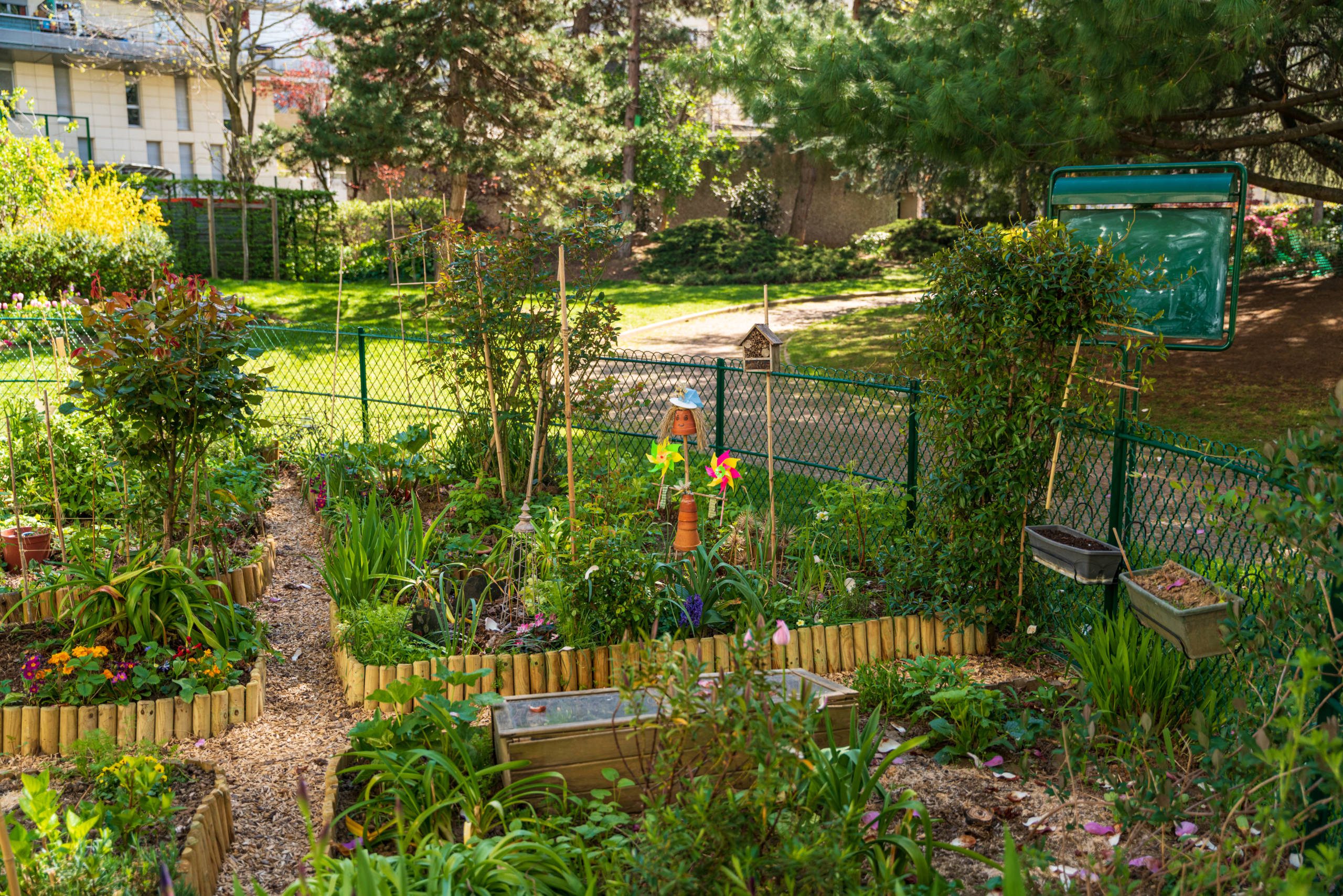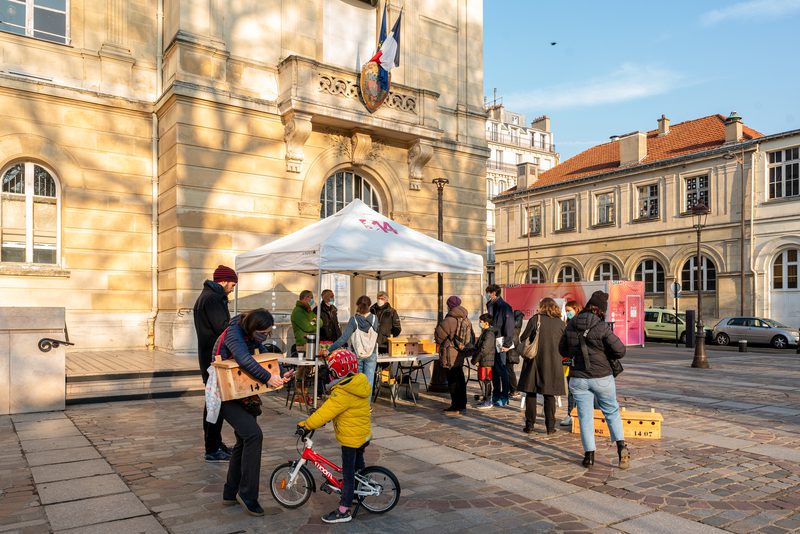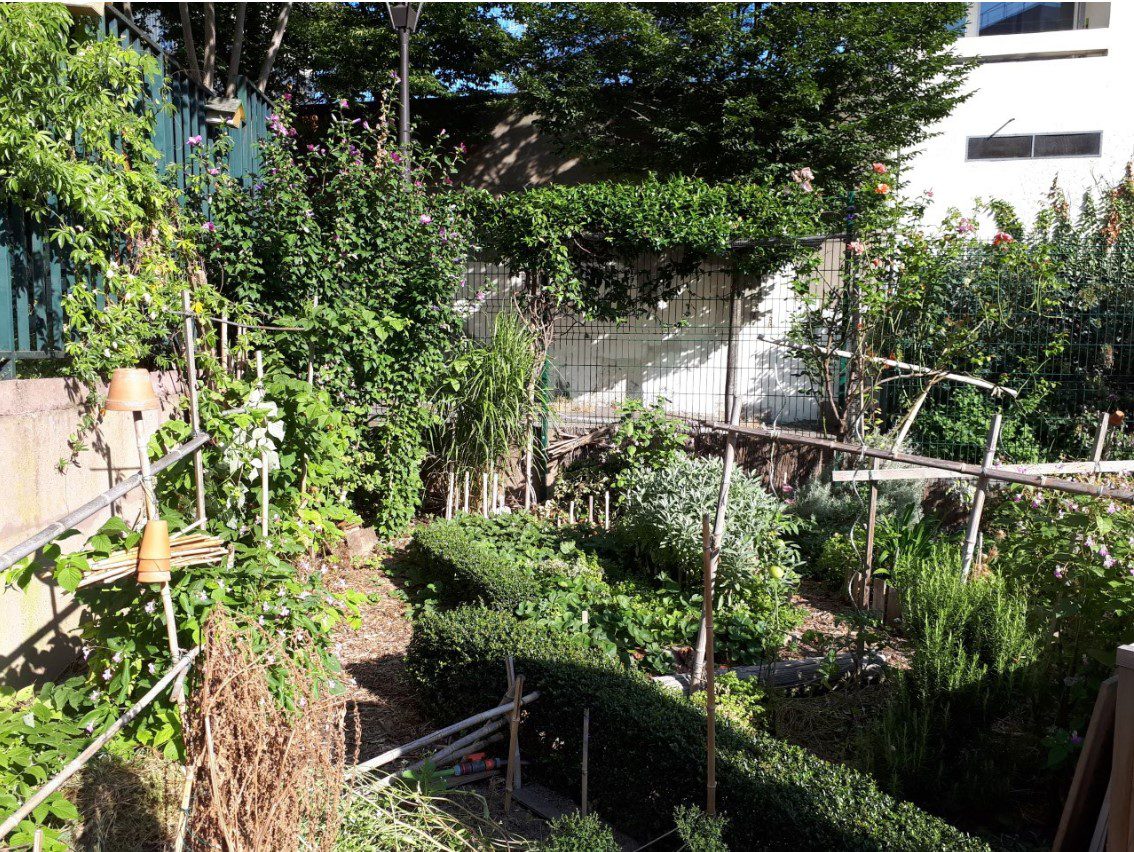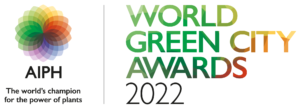Addressing the urban challenge
Breadth of the issue – How are the problem(s) that are being tackled by your initiative affecting citizens/local businesses or a significant component of the local wildlife?
The problems the City’s actions are intended to address are multiple. Concerning the decline of biodiversity in the capital, the 2020 Paris Nature Atlas has recorded 154 species of birds, including the House Sparrow. A scientific study has shown that this emblematic Parisian bird has lost 70% of its population since 2020. The decline of this small sparrow is multifactorial. The renovation of buildings as well as new constructions with smooth facades no longer present the small cavities necessary for nesting. As for the management of Parisian green spaces, while ecological with zero phytosanitary products, it does not yet reserve enough space or time for wild plants as their incomplete life cycle eliminates the insects and seeds essential to the diet of this bird. It is also a question of responding to the desire of our fellow citizens for nature, which is all the more important as Paris is the most densely populated city in Europe (20,641 inhabitants per km2 in 2018, Insee figure) and very mineralized, coming in last place in the 2018 Treepedia ranking with a Green View Index of 8.8% versus more than 20% for Amsterdam or Frankfurt. Urban agriculture, on the other hand, promotes the consumption of local products. Indeed, 70% or so of the volume of food consumed in Paris come from France but the average distance travelled by food consumed in Paris is 660 km.
Depth of the issue – How seriously are the problems being tackled by your initiative impacting the life of the citizens/businesses/wildlife concerned?
Several scientific studies show the benefits of nature in the city, whether it is the recovery rate of hospitalized patients or the reduction of absenteeism in the workplace, these rates all improve as soon as the subject enjoys a view of a natural environment as part of his surroundings. Similarly, the development of biodiversity in Paris leads to the extension of spaces favourable for walking as well as other sporting activities which city inhabitants are increasingly lacking. Before becoming Oasis courtyards, primary and junior high school courtyards were essentially paved and waterproof, massively participating in the urban heat island effect. The renovated courtyards offer more natural spaces and are open to the public on weekends, given that Paris lacks cooler spaces for conviviality which are accessible to all. The inclusive and participatory dimension of the Community Gardens and the Green Permit also help to combat the anomie characteristic of large urban centres and is likely to recreate social links between neighbours. Finally, our fellow citizens need to reconnect with nature. In a 2020 survey of Green Permit holders, their motivation for becoming involved was to increase the place of nature in the city at 49,5% followed by the pleasure of gardening at 40.2%.
The power of plants and natural ecosystems to deliver benefits
How is the initiative shaped by scientific evidence of the potential for plants and natural ecosystems to deliver benefits?
Paris is both a very dense urban environment and at the heart of the Île-de-France region. The city is subject to severe constraints: its territory is surrounded by an urban highway, which 4 million people pass through every day, and its neighbouring municipalities are themselves also highly urbanized. Despite this unique context in France, Paris is developing nature-based solutions following the International Union for Conservation of Nature (IUCN) framework, which consists of renaturing and ecologically restoring artificial urban plots. These solutions are based on scientific studies and have the double objective of addressing a societal problem and bringing a strong added value to biodiversity. They simultaneously contribute to the well-being of Parisians, commuters and visitors through the development of extinct natural ecosystems. One of the levers for mitigating weather hazards (heat waves, rains, and high winds, etc.) is by reconquering artificialized land and building the Parisian brown infrastructure through the removal of tarmac and vegetalisation of a portion of the public spaces. Part of the solutions being implemented include cooling techniques for the city, retention of rainwater, protection of water resources, carbon sequestration by reclaiming artificialized land that will be vegetalised and planting 170,000 trees by 2026, 154,000 of which will be on reclaimed land. The strengthening of the natural heritage contributes to the emergence of new jobs and social integration, as well as developing local recreational areas, ecotourism and education.
How has the city exploited the potential of plants and associated ecosystems to deliver more than one benefit?
Paris has mapped its local green and blue infrastructure known as the Paths of Nature. These networks continue to evolve thanks to the ongoing ecological diagnoses of its territory, allowing us to follow the evolution of its natural heritage composed of green spaces, natural spaces, identified priority habitats as well as animal and plant species. The guidelines derived from the nature paths enable the establishment of the appropriate provisions and prescriptions to maintain and strengthen the urban biodiversity on its territory and beyond, with the neighbouring municipalities and counties. The selection of specific plants also contributes to the improvement of faunal biodiversity (nectar-filled plants for wild pollinators, bushes and grasses favourable to sparrows). The strengthening of the green and blue nature paths contributes to the adaptation of the city to climate change (cooling and better recovery of rainwater). The landscaping projects implemented according to the priorities that emerge from this mapping also contribute to the beautification of the public space and to the improvement of the living environment, which is more serene. The greening of the public space is in fact entrusted to the road services who accompany this type of construction work in favour of soft mobility (bike paths, widened sidewalks, removal of parking spaces), hence an effective double action to fight against noise and air pollution. Finally, the possibility for Parisians to maintain certain plots themselves strengthens social links on a local level.
Innovative and Collaborative Solution
How does the initiative show evidence of feasibility, including on-going financial and logistical support?
The Reinventing Paris program involves limited costs for the city, as project leaders are responsible for their economic model while generating revenue for the municipality through the sale of real estate or the payment of rent. Similarly, the green permit program costs the City little since it is up to the licensees to implement their projects (purchase of planters and plants) and maintain them over the long term. However, it does provide logistical support with soil and seeds. This assistance will increase in the coming months with wooden barriers provided and laid by the city around tree trunks. The financial feasibility of these actions is proven. Other schemes involve a more substantial financial investment. For Community gardens and «Parisculteurs» urban farm sites, it is up to the owner, therefore the city, to ensure the preliminary development work. The promoters of these projects also benefit from support throughout their duration which can be supplemented by punctual material assistance (financial grants or in kind) via thematic calls for projects or the « Paris Sème » scheme launched in 2021. Its second edition is scheduled in 2022 and provides these stakeholders in the sustainable agricultural sector direct access to investment grants in order to invest, for example, in both ground and logistical equipment (i.e., a cargo-bicycle).
In what ways is the initiative innovative?
Regarding innovative actions, several examples can be cited. The “Oasis courtyard” project of greening primary and junior high school courtyards to make them more welcoming and better adapted to climate change, is systematically being co-designed with the school community. Several dozen courtyards have already been created and all of them, that is to say 760 will be completed by 2040, covering nearly 73hectares/180 acres. The city has also decided to innovate by greening through urban agriculture. For example, the “Parisculteurs” calls for proposals were launched to promote the initiatives of private stakeholders on various surfaces (roofs or slabs, basements, in the ground or up walls) that belong to the city or to institutional partners, both in and outside of Paris. In the basement, we put the emphasis on the production of endives or mushrooms as well as micro-greens which are grown under horticultural LED lamps. On rooftops, the systems of hydroponics, aeroponics, aquaponics, trays or mounds of earth are used depending on the maximum bearing capacity of the proposed surfaces. In open land, projects adapt according to the degree of pollution of the land (raised bed production or field vegetable crops). Parallel to this initiative, the City has been providing financial support since 2021 to sustainable local agriculture stakeholders through the “Paris Sème” (Paris Plants) initiative. This is a call for projects that will provide financial support for the development of structures already in place or in the process of being created, through investment grants.
How is the initiative supported by collaborative working across disciplines and sectors?
The Oasis courtyards bring together several partners including the Boards of Architecture, Urbanism and Ecology of Paris, the United Federation of Teachers of Paris, and the National Weather Service. For urban agriculture, the city runs a network of institutions, researchers, associations, and businesses including AgroParistech, the Chamber of Agriculture, as well as ethical banks such as Miimosa, La Nef, ADIVET, Astredhor, etc. The city also supports a professional training program: a Professional Certificate for Agricultural Operations Management (BPREA) developed at the Breuil school, a satellite organization of the city. Moreover, the winning structures that support Parisculteurs projects come from various backgrounds including businesses and associations. Finally, some projects are based on productive economic models while others are part of hybrid models with educational, participatory, or landscaping vocations. Additional structures allow actors outside of this sector to get involved in the renaturation of the city. This is the case with the Green Permit which concerns individuals, businesses or associations and is open to people without any prior gardening experience. The Reinventing Paris scheme was launched in 2014 with calls for projects for innovative urban ideas from promoters, investors and designers from around the world on Parisian sites, which belong to the City of Paris or its partners. They are invited to present their ideas for these locations, the winners can then buy or rent these spaces to carry out their projects, some of which have an important component dedicated to vegetalisation (the Fertile Island) or urban agriculture (the Railway Farm).
How does the initiative demonstrate evidence of community support?
In terms of citizen mobilization, every action necessarily takes the form of support from the territory. All amateur gardeners working under the green permit or in Community gardens do so on a volunteer basis, through actions that would otherwise not be done or only at the expense of the city. To ensure that this support is as effective as possible, it is recommended that applicants for a green permit submit their project in the form of a collective. This mobilization of local residents does not only concern the subject of revegetation. The «sparrow» scheme launched in 2021 aims to involve local volunteers in the repopulation of sparrows in Paris. The city distributes nesting boxes to inhabitants in areas deemed of interest and corresponding to colonies of sparrows weakened but still viable. In return, the residents install their nesting box and inform the city of their colonization by sparrows. This information helps update the database of the Bird Protection League, with whom the city is a partner. For urban agriculture, « Parisculteurs » organizes educational workshops and the sale of delicious, local products to Parisians on their sites. Their presence on the Parisian food markets during the Markets Festival 2021 was well received. This action should therefore be renewed on a regular basis in order to provide residents with access to quality, local products grown sustainably.
Implementation, Impact and Replicability
How does the initiative demonstrate evidence of a track record of success against pursued objectives?
Under the previous mandate from 2014-2020, the city aimed to triple the surface area of urban agriculture in Paris to reach 30 hectares of agricultural space. This goal was achieved with a total agricultural area of 31 hectares. Over fifty projects are now operational today thanks to the «Parisculteurs» program. The launch of the fourth edition in 2021 made it possible to create 17 new sites: 11 sites in Paris and 6 sites in neighbouring municipalities of Seine-Saint-Denis (4 sites), Val de Marne (1 site) and Yvelines (1 site). A total of 14 hectares were made available, including 1.6 hectares in Paris and 12.4 hectares in the nearby municipalities, of which 9.5 hectares are actually owned by the City of Paris. This 4th edition has enabled 12 new structures to join an already established network of 55 «Parisculteurs» project holders, further strengthening the ecosystem in place. Regarding participatory vegetation, the results are just as positive: Paris has 150 community gardens and creates approximately 10 new ones every year. The same success is true of the 2,800 Green permits. Their quality has also tended to improve as project promoters are now asked to give priority to greening in the ground (around tree bases and pits after removing the tarmac) versus the use of planters and flowerpots.
How has the initiative had a ripple effect beyond the scope of the initiative itself, thereby demonstrating a change in the city’s and/or its partners’ way of working with plants?
The Biodiversity Plan established by the City of Paris plans to use at least 50% of species which are of regional origin in the planting of its green spaces. The City’s horticultural production centre has adapted its supply accordingly to not only promote biodiversity but also to improve adaptation to climate change and resistance to insects and fungi by emphasizing for example the plantation of a greater diversity of tree species. The city carries the same rhetoric towards all the project promoters it supports. For example, under the green permit, seeds which are distributed free of charge to permit holders who request them are sourced from regional species. The city has also developed a list of preferred plants. These were chosen because of their regional origin but also based on other advantages: high tolerance of an urban environment, low allergy index, high melliferous potential favouring the presence of wild pollinators, grasses favourable to sparrows… This list is available to any project promoter who requests it: holder of a green permit, community garden, institution or business.
How have other cities expressed interest in the initiative, or what potential does it have to interest other cities and be customised to their own circumstances?
Paris is an expert member on high density environments in work groups such as « Collectivities & Biodiversity » and « Ecosystem Management » of the French International Union for the Conservation of Nature (IUCN) Committee, along with the Urbanism Club, Built and Biodiversity (U2B) of the League for the Protection of Birds as well as in steering committees such as the Foundation for Research for Biodiversity, the Regional Agency for Biodiversity (RAB) of the Ile-de-France in the junior high schools of local authorities. The Oasis courtyards are of interest to the RAB and the Ministry of Ecological and Solidarity Transition, who ask us for advice. Paris also regularly exchanges with other French cities and the interest is reciprocal: before launching our Green permits in open pits, we made a census of the experiments already conducted elsewhere (Bordeaux, Lyon, Strasbourg, Tours, etc.). It generally emerges from these exchanges that the constraints on Paris are stronger than in the provinces (strong mineralization of public space, urban density, intensity of uses). Finally, the Montreal urban agriculture laboratory and the City of Montreal were so inspired by the “Parisculteurs” that they created “Les Montrealculteurs”, a program accompanying the incubation and networking of local agricultural stakeholders in order to facilitate the establishment of commercial urban farms for the social economy. The City of Amsterdam is also interested in the functioning of «Parisculteurs» and is developing a similar accompaniment. Visits from foreign delegations are regularly organized by the City of Paris.
Sustainability and Resilience
What efforts have been made to reduce the carbon footprint of the initiative?
Within the participatory projects that the city supports, the local dimension is always privileged to limit transportation and the depletion of resources from elsewhere. In this respect, Community gardens are invited to make their own planters and other amenities. Among the services offered by the city, there are also hands-on workshops at the Gardening Pavilion (Maison du Jardinage) and online tutorials to become as autonomous as possible and limit the purchase of finished retail goods. In the Community gardens, there is also no electricity available as the activities are supposed to be manual and take place during the day. Regarding the carbon footprint of urban agricultural farmers, Paris ensures communication between members who wish to pool their deliveries. The city is also developing the availability of market stalls at open air food markets and the sales of their goods in public space to facilitate short supply chains. Other urban agriculture stakeholders have also chosen to market their products for direct sale or to distribute their products with a trailer bike. Finally, urban agriculture is naturally virtuous because it favours manual activities at the expense of large mechanical machinery. The use of chemical and environmentally hazardous products has also been prohibited by a municipal decree since 2019.
How have the anticipated impacts of climate change been considered?
The City of Paris tries to be exemplary in the support it provides to project leaders. It decided to subsidize in kind the Community gardens to help them become water-efficient by distributing water recuperators and ollas. The choice of these materials was also well thought out: nothing made of plastic as Paris is engaged in the fight against this material, rather barrels of recycled wood and microporous terra-cotta ollas. The use of ancestral solutions, even from other parts of the world, is indeed considered interesting. In addition to ollas, we can also mention the «keyholes» which allow the recycling and composting of green waste on site to directly nourish the soil. Consideration is also being given to allowing Green permit holders access to non-potable water outlets to water their plants and thus limit the consumption of drinking water for gardening activities. With regard to the choice of plant species, the city anticipates the climate change already underway by giving priority, apart from strictly regional species to those characteristics of the Mediterranean climate. Indeed, the Parisian climate is warming and if the annual rainfall is not expected to vary much, its distribution should evolve with longer, more intense, and more frequent drought episodes in the summer and more punctual and intense rainy episodes the rest of the year.
What processes does the initiative include for it to be considerate in its use of soils and other natural resources?
Since Paris is very mineral and urbanized, it is impossible to plant without using external natural resources. The city nevertheless takes care to minimize the negative impact of its actions on other territories. Consequently, if the use of soil is authorized to enrich the topsoil, it must not be constituted from peat. Paris also has a Rainwater Plan which aims to improve rainwater recovery. For example, Oasis courtyards are disconnected from the storm water system, allowing rainwater to be collected directly by the plot. In the same way, a call for projects was launched with designers to create a kit to connect to non-potable water outlets. Presently, two project finalists are under trials by a couple of Green permit collectives to select the winning model to be mass produced and donated to licensees. This will also limit the use of potable water used to water plantations by Green permit holders on public land.
Monitoring, Maintenance, and Management
How has the initiative been designed and implemented so that long-term needs for management and maintenance are reduced and can be met?
Promoting biodiversity, that is to say wild flora and fauna, is important in terms of maintenance, whether in regard to the time spent or the cost. This point is very often raised by the City’s services to project promotors during appraisals to encourage them to review their practices. In the case of a condominium who wants to be advised on the plantation of its interior courtyard, they would be encouraged to opt for a flowery meadow over a mowed lawn. The choice of plants and trees which are more resistant to climate change and aggressions is also an advantage as these plants will fare better and live longer. These changes are well received by those in charge of the financial and technical maintenance. On the other hand, it is more problematic with respect to the general public as it requires a fresh outlook on the city. Letting nature develop is still too often perceived as a failure of management or even as dirty. There is a similar problem with lawns in green spaces, users need to understand that a lawn’s natural cycle is in fact to be yellow in the middle of the summer. The city must therefore accompany the public to bring about a change in mentality on these subjects.
What protocols are in place to facilitate monitoring of results?
Paris communicates its naturalistic data to regional and national databases, finances research and scientific laboratories, carries out the mapping of its green and blue nature paths via a Geolocation Computer System, participates in regional action plans on chiropterans and donates and calculates its Singapore Index, an international self-assessment tool allowing governments and local authorities to measure the state of their biodiversity and the progress made. The city also has a tree-specific database, where each tree on the public space has been given an allocation number. Regarding the Green Permit program, the City has developed a field application that allows it not only to instruct all new applications but also to follow each permit throughout its duration (instruction, attribution, monitoring of land, repeal or renewal) and to make extractions for statistical purposes on Paris as a whole, by district or typologies (tree bases, planters, pits, and others).
How has the initiative been enhanced in response to monitoring of results?
Mobilizing the territory to increase the impact of public policies effectively means listening to users to help them with their initiatives. This is particularly the case for the Green Permit scheme created in 2015. Its success from the outset forced the administration to adapt their organization and their resources. The dedicated team has been strengthened by new hires and a specific field application has been designed internally to automate the processing of requests and ensure a better follow-up. Since then, difficulties faced by licensees regarding tree bases have emerged, as they were previously responsible for installing the barriers, soil, and signage themselves. These elements proved to be a blocking factor for many of them and deterred them from implementing their license. A public contract is now being prepared and will be operational beginning in April 2022. The city will entrust a company with all of these amenities, allowing licensees to start gardening on the public space. Isolation of individual licensees may also explain the failure of some licensees. The city is now working to improve networking between licensees and also with the nearest Community gardens for gardening advice and the loan of tools. These gardens will act as a local relay in the field of participatory greening in order to foster synergies between these two proven programs.

















